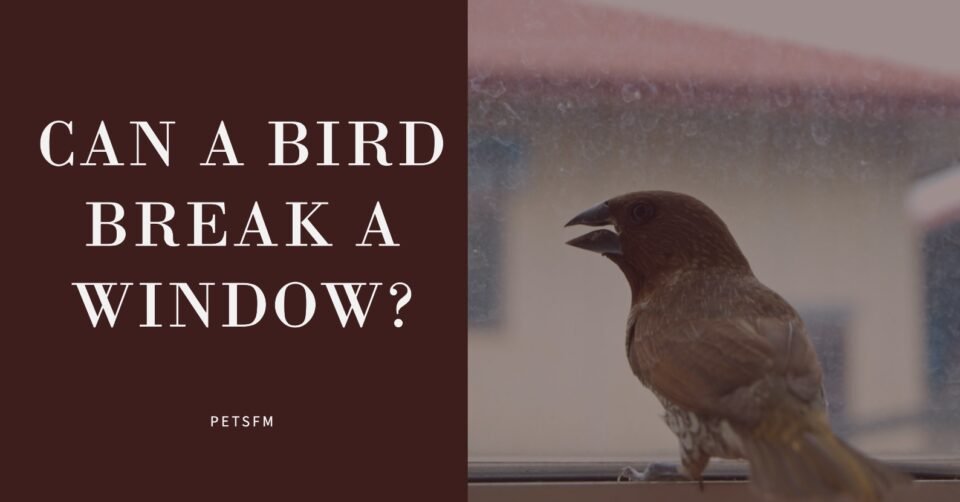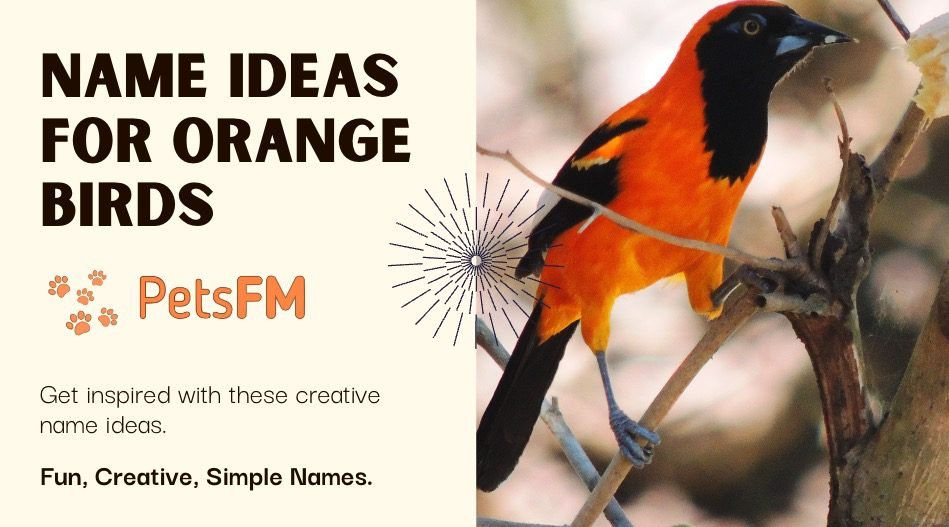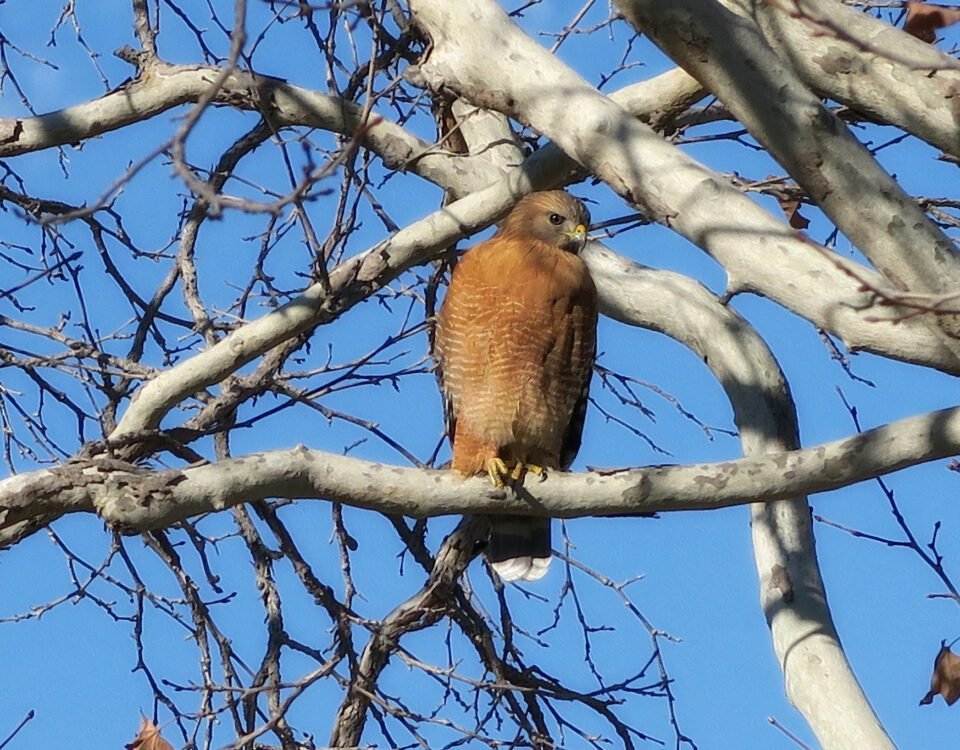


Can Birds Have Milk? Different Types of Milk Analyzed!
September 16, 2023


Why Are Birds So Cute? 10 Reasons Why Birds Are Cutest
September 17, 2023Have you ever wondered if a bird can break a window? Glass windows present a significant hazard for birds. Instead of being invisible, they often reflect the sky or plants, making them appear inviting spaces to fly through. Given the vast number of windows, the impact on bird populations is considerable. A study estimated that nearly 1 billion birds perish yearly in the U.S. due to collisions with windows.
The following article delves into the primary factors influencing whether a bird can shatter a window. By the conclusion of this guide, you will gain expert knowledge of the interplay between birds and windows!
Also Read: Why Do Birds Get Aggressive? What You Need to Know?
Can A Bird Break A Window?
Indeed, under specific circumstances, birds can and have broken windows. Though uncommon, there have been instances where birds, flying at high velocities, have smashed through glass windows. The momentum from a rapidly flying bird can cause the glass to break upon impact.
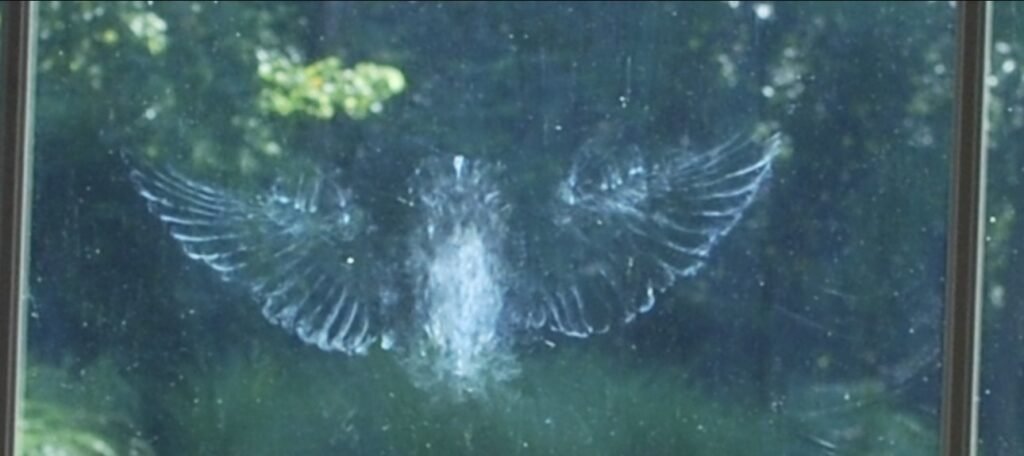

Can A Bird Break A Window?
How Come A Bird Can Break A Glass Window?
Birds have a unique way of perceiving the world, which differs significantly from humans, leading them to often colide with glass or break a window. Experts believe that due to their evolutionary lineage from dinosaurs, birds might have a limited ability to focus on objects that are several centimeters away from their eyes.
This limitation makes it challenging for them to measure distances, which, in their perspective, is similar to humans having difficulty measuring depth.
Birds possess an extraordinary visual system. They have an entire 360-degree field of view and lack the blind spots that humans have. Furthermore, birds can detect ultraviolet light, which humans can’t. Consequently, to them, glass appears as an intensely dark surface.
Reasons Why A Bird Breaks A Glass Window
The following are a few reasons why a bird is more likely to break a window:
Bird Dimensions
The size of a bird plays a significant role in its potential to break windows. Naturally, larger birds like geese, swans, herons, gulls, and ravens, with their increased body mass and extensive wingspan, can produce a more substantial impact force than their smaller counterparts, such as songbirds.
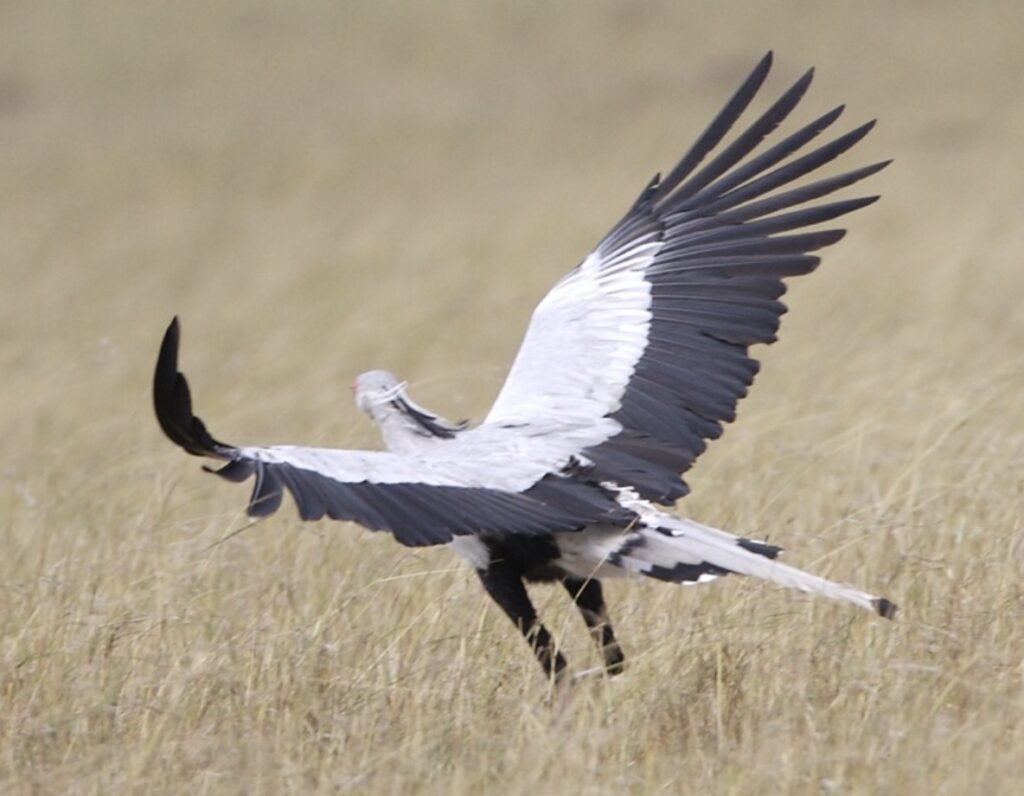

Secretarybird
Bird Velocity
The speed at which a bird flies significantly affects the collision force. The combination of mass and speed dictates the kinetic energy during a collision. Thus, birds swooping down rapidly present a more significant threat to windows than leisurely passing by.
Bird Perception
Birds struggle to differentiate between windows and open spaces. Whether the glass is transparent or reflective, it often appears invisible to them, leading to unintended crashes. This visual limitation of birds can lead to collisions potent enough to crack or even break the glass.
Bird Anatomy
Certain birds possess specific anatomical features that enhance their ability to break windows. Birds like woodpeckers, with specialized beaks designed for smashing, and certain birds of prey have physical adaptations that increase the likelihood of shattering glass upon collision.
Editor’s Pick: Why Do Some Birds Have Red Eyes? [EXPLAINED]
What Kind Of Glass Windows Increase the Risk Of Bird Collision?
The following features of a glass window increase the risk of bird crashes:
Window Dimensions
The size of a window can significantly influence its susceptibility to breakage. Larger panes, such as floor-to-ceiling or wall-sized windows, not only offer bigger targets but also have an increased potential for breakage due to their expansive surface area.
Window Thickness
Conventional single or double-pane windows are generally more prone to breaking. In contrast, windows made of thicker tempered, laminated, or reinforced glass provide better resistance against shattering. Hence, the thinner the window, the more vulnerable it is, while thicker, specially treated panes offer greater resilience against impacts.


Window Thickness
Glass Variety
Standard plate glass is particularly susceptible to breakage. On the other hand, tempered, laminated, wired, or coated glass types offer better durability. Special treatments provide the glass with added strength to better handle impacts. Thus, plain, non-reinforced glass panes are the most susceptible to bird strikes.
Vertical Position of the Window
Windows positioned lower on buildings are at a higher risk of breakage, mainly because birds typically gain velocity during a downward flight. Windows higher up are less exposed to rapid bird flights. The potential for collision and its consequent force amplifies the closer a window is to ground level.
Impact Direction is Crucial
Collisions that are head-on are the most damaging. When birds hit a window at an angle, the smash is spread out, leading to a reduced force. Direct, straight-on collisions cause more harm than angled, glancing strikes.
Editor’s Pick: Why Are Birds So Cute?
What Happens When A Bird Hits A Window?
Naturally built for flight, birds have a remarkable yet unfortunate capacity to crash into window. Such collisions can result in severe injuries for them and pose dangers to humans, especially children.
While it’s common knowledge that birds often collide with glass, the after-effects of such incidents might astonish many people. For over half a century, the window industry has known that millions of birds perish annually from such collisions in North America alone.
Shockingly, a study sponsored by The Association of Flight Attendants estimated that each year, glass collisions claim the lives of 599 million birds in the U.S. alone.
Interestingly, birds fear glass structures as much as humans might. Yet, the precise architecture of skyscrapers is designed primarily for internal aesthetics. Tragically, birds frequently suffer instant fatalities when they collide with these buildings.
Can A Bird Smash A Car’s Window?
Under the force of powerful winds and their own body weight, a roosting bird has the potential to damage a car’s window. Despite the perceived toughness of its beak, it might break when colliding with a solid object like a car window.
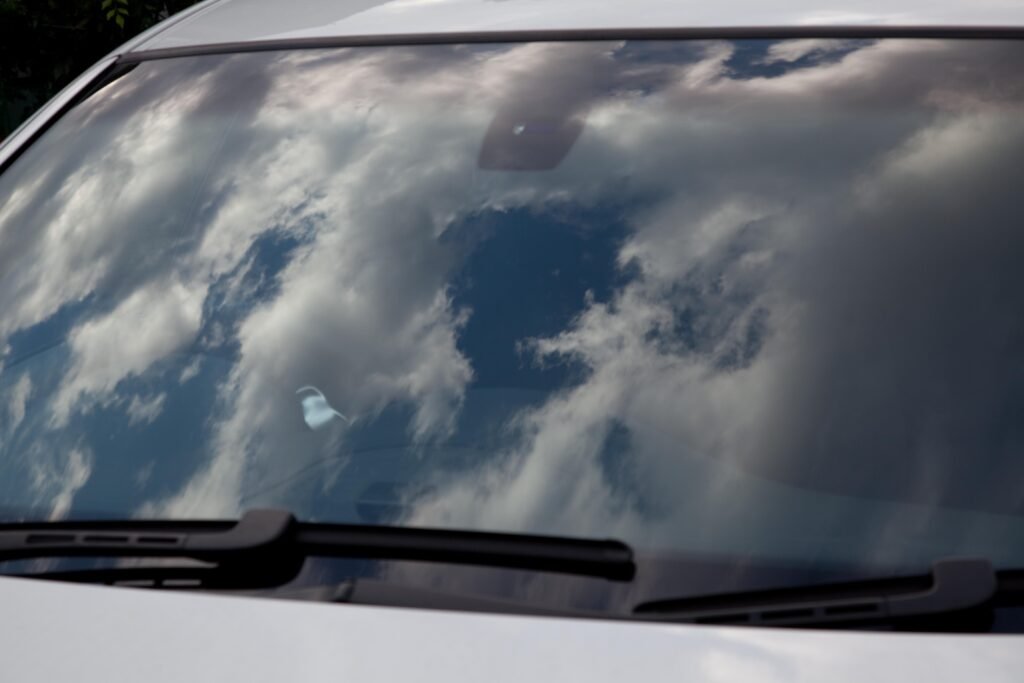

Cars Window
Encountering a bird striking your vehicle is among the most unforeseen incidents. Such an impact can be lethal, not only surprising, given its unpredictability. However, the aftermath isn’t limited to a cracked windshield. Such a collision can cause extensive damage to the entire front portion of your vehicle.
How To Prevent Birds From Colliding Into Glass Windows?
There are several ways you can prevent birds from colliding with your glass windows.
Study Collision Trends
Birds often hit the same windows repeatedly and at particular times of the day. Observe these patterns by looking at the window’s reflection from a bird’s perspective during different times of day.
Additionally, monitor feeders and birdbaths; if collisions occur frequently as birds fly from these spots, consider moving the feeders closer to windows. A short distance (2-3 feet) reduces the chance of birds picking up harmful speeds.
Implement Impact-absorbing Barriers
Standard window screens can effectively prevent bird strikes. They not only disrupt reflections but also cushion the impact, protecting birds.
Screens that attach to the window with hooks or suction cups are an excellent choice. They can also deter territorial birds from attacking reflections.
Disrupt the Reflection
Use decals or stickers of at least 6 inches in diameter to warn birds. When applying, ensure they’re spaced one foot apart in both directions. Some decals are specially designed to reflect ultraviolet light, visible to birds but not humans, serving as a discreet option.
Alternatively, outdoor string curtains can be effective. Products like Acopian Bird Savers are commercial solutions, but DIY alternatives work, too.
Helping An Injured Or Stunned Bird
A bird colliding with a window might suffer temporary shock due to brain swelling. If potential predators like cats are around, secure the bird in a closed box or shield it under a colander for protection.
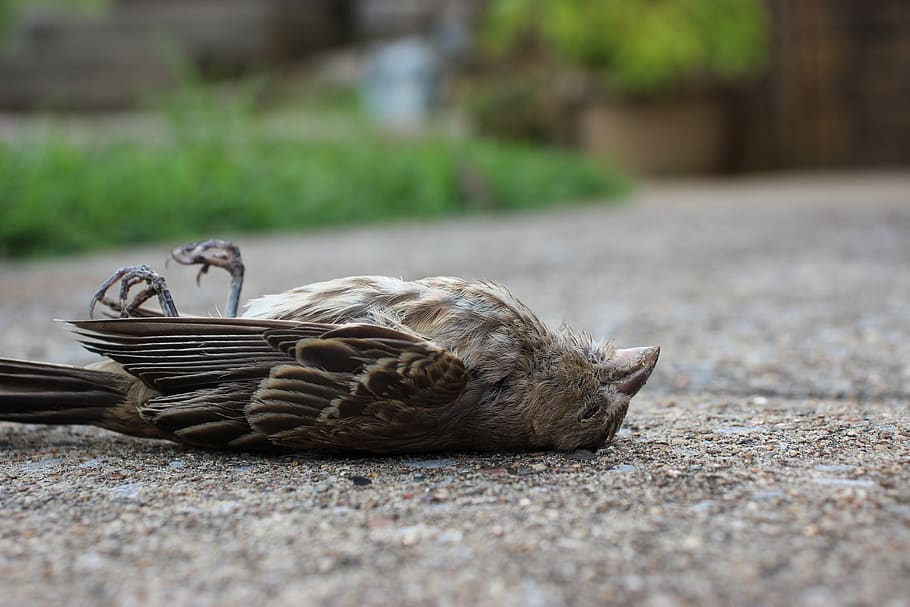

Helping An Injured Or Stunned Bird
Minimize handling the bird and refrain from offering food or water. Once the bird shows signs of activity as the swelling decreases, it can be safely released. However, if there’s no sign of recovery, it’s essential to seek assistance from a specialist.
Recommended Read: Why Do Birds Eat Their Babies? How To Prevent It?
Conclusion
To sum it up, although it’s uncommon, bigger bird species can break household windows. Factors such as the bird’s size, velocity, and angle of impact combined with the window’s dimensions, glass thickness, elevation, and material significantly influence the potential for damage.
Regular windows situated on the ground levels are most susceptible. Thankfully, a harmonious coexistence between birds and windows is achievable by employing the right precautions!
